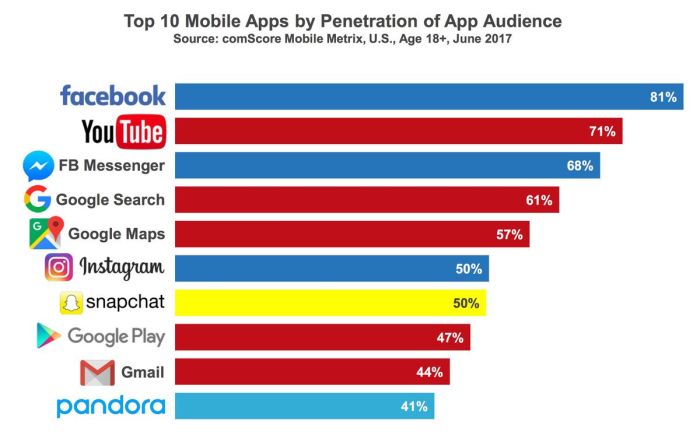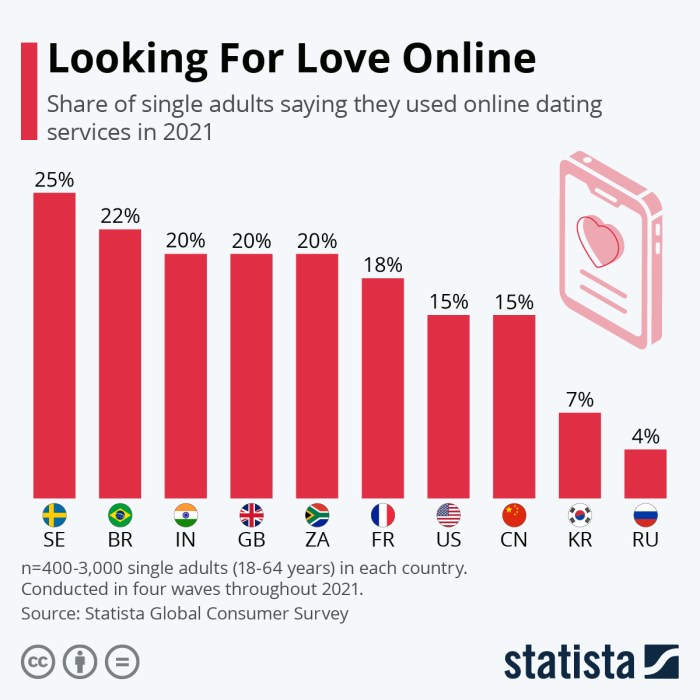Navigating the digital landscape of love, the success rate of US dating apps presents a fascinating case study. Millions swipe, match, and message daily, yet the journey from app download to lasting connection is far from guaranteed. This exploration delves into the multifaceted factors influencing these rates, from app features and user demographics to marketing strategies and technological advancements. We'll examine how design, pricing models, and even AI algorithms shape the user experience and ultimately, the likelihood of finding love online.
Understanding these dynamics is crucial not only for app developers seeking to optimize their platforms but also for users aiming to maximize their chances of success. By analyzing user behavior, market trends, and the evolving technological landscape, we can gain valuable insights into the complex interplay of factors contributing to – or hindering – the quest for love in the digital age.
Factors Influencing US Dating App Success

Source: vox-cdn.com
App Features and User Engagement
App features directly correlate with user engagement rates. Features like robust search filters, intuitive interfaces, and engaging profile creation tools significantly impact user retention and activity. Apps offering advanced features such as video chat, AI-powered matching algorithms, or detailed personality assessments often experience higher user engagement. Conversely, apps with clunky interfaces or limited functionality tend to see lower user activity and higher churn rates. For example, Hinge's focus on detailed prompts and meaningful connections contributes to its higher engagement compared to apps that prioritize superficial swiping.Demographic Impact on Success Rates
Demographics play a significant role in shaping success rates across different dating apps. Age, location, and income all influence app usage and preferences. Younger users (18-25) tend to gravitate towards apps known for their casual nature and quick matches, while older users (35+) may prefer apps emphasizing deeper connections and long-term relationships. Location also matters; densely populated urban areas tend to yield higher match rates due to a larger pool of potential partners. Income levels can influence subscription rates to premium features, with higher-income users potentially more likely to opt for paid services. For example, apps like Raya, catering to a high-income demographic, focus on exclusivity and a curated user base.Niche vs. Mainstream Dating Apps
Niche dating apps, catering to specific demographics or interests (religious, LGBTQ+, etc.), often boast higher success rates within their target audiences compared to mainstream apps. This is because these apps create focused communities where users share common values and interests, fostering more meaningful connections. However, niche apps may have smaller user bases, potentially leading to fewer potential matches compared to mainstream platforms. For example, a religious dating app might experience higher success rates among users seeking faith-based relationships but might have a smaller overall user pool than Tinder. Similarly, LGBTQ+ dating apps cater to a specific community with unique needs and preferences, often leading to a more positive user experience and higher rates of successful matches.App Pricing Models and User Retention
The following table illustrates the relationship between app pricing models and user retention rates, highlighting the potential trade-offs between revenue generation and user engagement. Note that these figures are illustrative and vary based on app specifics and market conditions.| Pricing Model | Average User Retention Rate (3 months) | Example Apps | Notes |
|---|---|---|---|
| Free (with in-app purchases) | 30-40% | Tinder, Bumble | High user acquisition, lower average revenue per user (ARPU) |
| Freemium (limited free features, paid subscription for full access) | 40-50% | Hinge, OkCupid | Balances user acquisition with monetization |
| Subscription-only (paid access only) | 50-60% | Raya | Higher ARPU, but lower user acquisition |
| Pay-per-feature | 25-35% | Various niche apps | Highly dependent on feature attractiveness and pricing |
User Behavior and App Performance

Source: statcdn.com
Successful Marketing Strategies Employed by Popular US Dating Apps
Popular US dating apps employ a variety of successful marketing strategies, often combining several approaches for maximum impact. These strategies focus on building brand awareness, targeting specific demographics, and driving user acquisition and engagement. For example, Tinder leverages social media marketing extensively, utilizing targeted advertising campaigns on platforms like Instagram and Facebook to reach potential users based on their interests and demographics. Hinge, on the other hand, emphasizes a more sophisticated approach, focusing on creating high-quality content that resonates with its target audience and fostering a sense of community. Bumble's marketing often highlights its female-first approach, attracting users who value safety and empowerment. These strategies, while different in their execution, all share the common goal of increasing brand visibility and user acquisition.UI/UX Design's Impact on US Dating App Success
The UI/UX design of a dating app plays a pivotal role in its success. A well-designed app is intuitive, easy to navigate, and visually appealing, encouraging users to spend more time on the platformCommon Reasons for User Churn in US Dating Apps and Suggested Improvements
High user churn is a significant challenge for dating apps. Common reasons include a lack of meaningful matches, frustrating user experiences, safety concerns, and the feeling that the app is not meeting their needs. To combat this, apps can implement improvements such as enhanced matching algorithms to better connect compatible users, improved moderation to enhance safety, and more robust communication features to facilitate better interactions. Introducing features like detailed profile prompts, video introductions, or virtual dating experiences can increase user engagement and satisfaction, reducing the likelihood of churn. Regularly soliciting user feedback and incorporating it into app updates can also contribute to a more positive and fulfilling user experience.Comparative Analysis of Features Offered by Top-Performing US Dating Apps and Their Correlation with User Satisfaction
A comparative analysis reveals a correlation between specific features offered by top-performing US dating apps and user satisfaction. Below is a comparison of features:| App | Key Features | Correlation with User Satisfaction |
|---|---|---|
| Tinder | Swipe-based matching, extensive user base, social features | High user base contributes to high match frequency, but shallow profiles can limit meaningful connections. |
| Hinge | Detailed profile prompts, focus on meaningful connections, less emphasis on superficial swiping | Higher user satisfaction due to focus on quality over quantity. |
| Bumble | Women-first messaging, focus on safety and empowerment | High satisfaction among female users due to increased control and safety. |
| OkCupid | Detailed questionnaires, in-depth matching algorithm, focus on compatibility | High satisfaction for users seeking long-term relationships. |
Market Trends and Future Predictions
The US dating app market is a dynamic landscape, constantly evolving with technological advancements and shifting user preferences. Understanding current trends and predicting future developments is crucial for app developers and investors alike. This section will examine key market forces shaping the future of US dating apps, focusing on the influence of social media, artificial intelligence, and emerging technologies.Social Media Integration's Impact on Dating App Success
Social media integration has become a defining feature of successful US dating apps. Platforms leverage existing social networks to enhance user profiles, verify authenticity, and expand reach. This integration allows users to connect their dating profiles with their established social media presence, providing potential matches with a more holistic view of their personality and interests. This increased transparency can lead to more meaningful connections and improved matching algorithms. For example, apps that integrate with Instagram allow users to showcase their visual personality, potentially increasing engagement and match success rates. Conversely, concerns regarding privacy and data security related to such integrations remain a significant challenge that needs continuous addressing and improvement.Artificial Intelligence's Role in Matching and User Experience
Artificial intelligence (AI) is revolutionizing the US dating app landscape. Sophisticated algorithms analyze vast datasets of user profiles and interactions to improve matching accuracy and personalize the user experience. AI-powered features such as intelligent matching, personalized recommendations, and automated communication tools enhance efficiency and user satisfaction. For instance, AI can analyze communication patterns to predict compatibility and suggest conversation starters, leading to improved interaction quality. Moreover, AI-driven chatbots can provide instant support and guidance to users, improving overall app usability. However, the ethical considerations surrounding data privacy and algorithmic bias in AI-driven matching remain a critical area for ongoing discussion and development.Timeline of US Dating App Evolution and Milestones
The evolution of US dating apps can be charted through several key milestones:| Year | Milestone | Impact |
|---|---|---|
| Early 2000s | Rise of early dating websites (e.g., Match.com) | Established the online dating concept. |
| Mid-2000s | Emergence of mobile dating apps (e.g., Tinder) | Revolutionized accessibility and convenience. |
| Late 2010s | Increased focus on niche dating apps (e.g., Bumble, Hinge) | Catered to specific demographics and relationship goals. |
| 2020s | Integration of AI and social media features | Enhanced matching accuracy and user experience. |
Emerging Technologies' Influence on Future Success
Emerging technologies like virtual reality (VR) and augmented reality (AR) hold the potential to significantly impact the future of US dating apps.- Virtual Reality (VR): VR could create immersive virtual dating experiences, allowing users to interact with potential matches in simulated environments. This could reduce the anxiety associated with first dates and foster more genuine connections. Imagine a virtual coffee date where users can interact in a safe and comfortable setting before meeting in person.
- Augmented Reality (AR): AR could enhance the discovery and interaction phases of dating. Imagine an app that overlays information about potential matches onto the real world when you are out and about, facilitating serendipitous encounters. AR could also add interactive elements to dating profiles, enriching user experiences and enhancing communication.